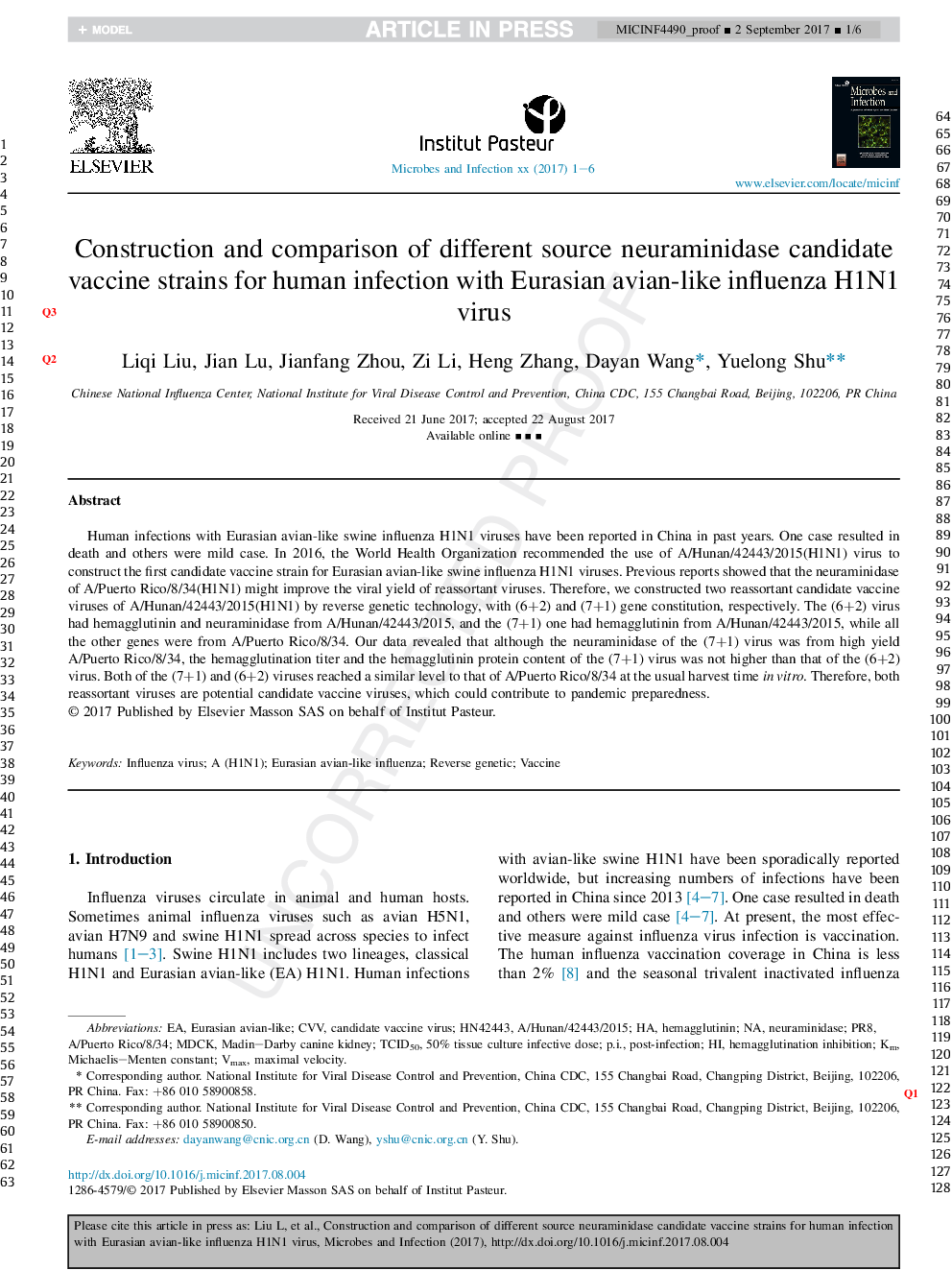| کد مقاله | کد نشریه | سال انتشار | مقاله انگلیسی | نسخه تمام متن |
|---|---|---|---|---|
| 8749128 | 1593629 | 2017 | 6 صفحه PDF | دانلود رایگان |
عنوان انگلیسی مقاله ISI
Construction and comparison of different source neuraminidase candidate vaccine strains for human infection with Eurasian avian-like influenza H1N1 virus
دانلود مقاله + سفارش ترجمه
دانلود مقاله ISI انگلیسی
رایگان برای ایرانیان
کلمات کلیدی
TCID50VmaxCVVMDCKcandidate vaccine virusPR8A/Puerto Rico/8/34p.i.50% tissue culture infective dose - 50٪ کشت بافت آلودگیMichaelis–Menten constant - دائمی Michaelis-Mentenmaximal velocity - سرعت حداکثرReverse genetic - معکوس ژنتیکhemagglutination inhibition - مهار هموگلوبینneuraminidase - نورآمینیدازhemagglutinin - هماگلوتینینVaccine - واکسنInfluenza virus - ویروس آنفولانزاpost-infection - پس از عفونتMadin–Darby Canine Kidney - کلیه کلیوی کلیوی Madin-Darby
موضوعات مرتبط
علوم زیستی و بیوفناوری
ایمنی شناسی و میکروب شناسی
ایمونولوژی
پیش نمایش صفحه اول مقاله

چکیده انگلیسی
Human infections with Eurasian avian-like swine influenza H1N1 viruses have been reported in China in past years. One case resulted in death and others were mild case. In 2016, the World Health Organization recommended the use of A/Hunan/42443/2015(H1N1) virus to construct the first candidate vaccine strain for Eurasian avian-like swine influenza H1N1 viruses. Previous reports showed that the neuraminidase of A/Puerto Rico/8/34(H1N1) might improve the viral yield of reassortant viruses. Therefore, we constructed two reassortant candidate vaccine viruses of A/Hunan/42443/2015(H1N1) by reverse genetic technology, with (6+2) and (7+1) gene constitution, respectively. The (6+2) virus had hemagglutinin and neuraminidase from A/Hunan/42443/2015, and the (7+1) one had hemagglutinin from A/Hunan/42443/2015, while all the other genes were from A/Puerto Rico/8/34. Our data revealed that although the neuraminidase of the (7+1) virus was from high yield A/Puerto Rico/8/34, the hemagglutination titer and the hemagglutinin protein content of the (7+1) virus was not higher than that of the (6+2) virus. Both of the (7+1) and (6+2) viruses reached a similar level to that of A/Puerto Rico/8/34 at the usual harvest time in vitro. Therefore, both reassortant viruses are potential candidate vaccine viruses, which could contribute to pandemic preparedness.
ناشر
Database: Elsevier - ScienceDirect (ساینس دایرکت)
Journal: Microbes and Infection - Volume 19, Issue 12, December 2017, Pages 635-640
Journal: Microbes and Infection - Volume 19, Issue 12, December 2017, Pages 635-640
نویسندگان
Liqi Liu, Jian Lu, Jianfang Zhou, Zi Li, Heng Zhang, Dayan Wang, Yuelong Shu,